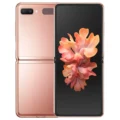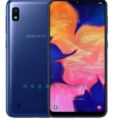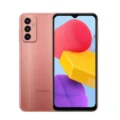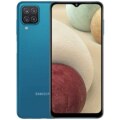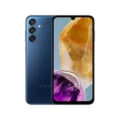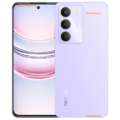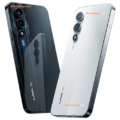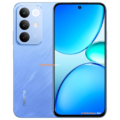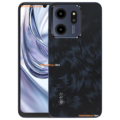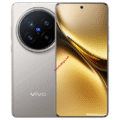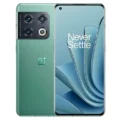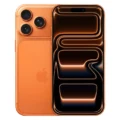Price List: Under Tk.5,000 | Tk.5001-10000 | Tk.10001-15000 | Tk.15001-20000 | Tk.20001-30000 | Tk.30001-40000 | More Mobiles
- Home
- All Mobile
- Samsung
- Samsung Galaxy S10E
Samsung Galaxy S10E
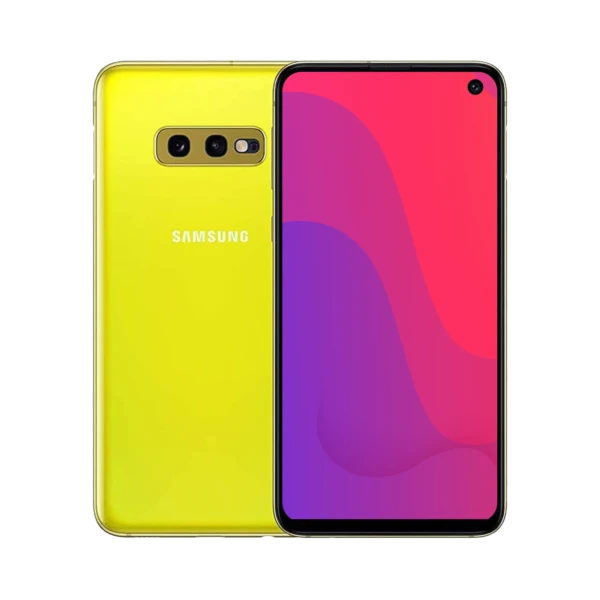


Specifications
Price in Bangladesh
| Official | 8GB 128GB ৳74,900 |
| Unofficial Unofficial prices and phones are available only non authorized shops. The device does not come with an official warranty in Bangladesh. | 6GB 128GB ৳48,000 |
General
| Device Type | SmartPhone |
| Model | SM-G970F, SM-G970U, SM-G970W, SM-G9700, SM-G970U1, SM-G970N, SM-G970X |
| Announced | February, 2025 |
| Released | March, 2025 |
| Status | Available |
Hardware & Software
| Operating System OS => Every computer system run on a base software called Operating System (OS). Operating System controls all basic operations of the computer (such as smartphone, PDAs, tablet computers and other handheld devices). The Operating System allows the user to install and run third party applications (apps), apps are used to add new functionality to the device. | Android |
| OS Version | v9.0 (Pie) |
| User Interface UI or user interface of a device is the look and feel of the on-screen menu system. How it works, its color scheme, how it responds to button presses, all of these things are part of the user interface. | Samsung One UI |
| Chipset Chipset is a group of integrated circuits designed to perform one or a more dedicated functions, often with real time computing constraints, Popular smartphones are equipped with more advanced embedded chipsets that can do many different tasks depending on their programming. | Exynos 9820 |
| CPU CPU (Central Processing Unit) mostly known as processors, CPU processes instructions in order to carry out certain functions that make your device operate properly. Processors are often described as the brain of computers, smartphones and tablets, Smartphones and tablets rely on processors to carry out their every task, Processors are an incredibly important factor in selecting any type of computing device, including your smartphone. | Octa core (2.73 GHz, Dual core, M4 Mongoose + 2.31 GHz, Dual core, Cortex A75 + 1.95 GHz, Quad core, Cortex A55) |
| CPU Cores | 8 Cores |
| Architecture | 64 bit |
| Fabrication | 8 nm |
| GPU GPU (Graphics Processing Unit) is a single-chip processor designed to rapidly manipulate and alter memory to accelerate the creation of images in a frame buffer intended for output to a display, This includes things such as lighting effects, object transformations, and 3D motion. | Mali-G76 MP12 |
| RAM (Memory) RAM (Random Access Memory) is a type of computer memory that can be accessed randomly, any byte of memory can be accessed without touching the preceding bytes that allows information to be stored and accessed quickly from random locations. RAM is the most common type of memory found in computer systems, smartphones, tablets and other electronic devices. | 6 GB, 8 GB |
Design
| Dimensions | 142.2 x 69.9 x 7.9 mm (5.60 x 2.75 x 0.31 in) |
| Weight | 150 g (5.29 oz) |
| Colors |
Prism White, Prism Black, Prism Green, Prism Blue, Canary Yellow, Flamingo Pink |
| Build Material | Glass front (Gorilla Glass 5), glass back (Gorilla Glass 5), aluminum frame |
| Water Resistant | Water resistant (up to 30 minutes in a depth of 1.5 meter) |
| IP Rating | IP68 |
| Ruggedness | Dust proof |
Display
| Display Type Display Technology => A number of display technologies and types used in mobile phones => TFT (Thin Film Transistor), IPS (In-Place Switching), OLED (Organic Light Emitting Diode), AMOLED (Active-Matrix Organic Light-Emitting Diode), Super AMOLED (an even advanced version of AMOLED), Resistive Touchscreen (Resistive touchscreens contain two layer of conductive material with a very small gap between them which acts as a resistance), Capacitive Touchsceen (Capacitive touchscreen technology consists of a layer of glass coated with a transparent conductor) | Dynamic AMOLED |
| Size | 6.4 inches (16.26 cm) |
| Resolution | 1440x3040 px (QHD+) |
| Aspect Ratio | 19:9 |
| Pixel Density Pixel Density (PPI) is refers to the concentration of pixels on a particular display, measured in pixels per inch (ppi). Pixel density is calculated by dividing the diagonal pixel resolution of a display by its diagonal size, higher pixel density better display quality. | 526 ppi |
| Screen to Body Ratio | 87.11 % |
| Touch Screen | Capacitive Touchscreen, Multi-touch |
| Refresh Rate | 60 Hz |
| HDR 10 / HDR+ support |
Rear Camera
| Camera Setup | Dual |
| Main Camera | 12 MP |
| Second Camera | 16 MP |
| Autofocus | Phase Detection autofocus, Dual Pixel autofocus |
| OIS | |
| Flash Flash Light => There is commonly two types of flash lights are used in camera mobile phones, LED Flash (LED flash offers lower power consumption with drive circuitry that takes up very little room, LEDs can be strobed faster than any other light source), Xenon Flash (xenon flash produces an extremely intense full-spectrum white light for a very short duration) | LED Flash |
| Image | 4000 x 3000 Pixels |
| Settings | Exposure compensation, ISO control |
| Zoom | 10 x Digital Zoom |
| Shooting Modes | Continuous Shooting, High Dynamic Range mode (HDR) |
| Aperture | f/2.2 |
| Camera Features |
Auto Flash, Face detection, Touch to focus |
| Video | 2160p@60fps, 1080p@240fps, 720p@960fps, HDR, dual-video rec. |
| Video Recording Features | 3840x2160, 1920x1080, 1280x720 |
| Video FPS | 30 fps, 60 fps |
Front Camera
| Camera Setup | Single |
| Secondary |
10 MP, f/1.9, 26mm (wide), Dual Pixel PDAF |
| Flash Flash Light => There is commonly two types of flash lights are used in camera mobile phones, LED Flash (LED flash offers lower power consumption with drive circuitry that takes up very little room, LEDs can be strobed faster than any other light source), Xenon Flash (xenon flash produces an extremely intense full-spectrum white light for a very short duration) | Screen flash |
| Aperture | f/1.9 |
| Video | 2160p@30fps, 1080p@30fps |
| Video FPS | 30 fps |
Battery
| Battery Type Battery Type => Cell phones run on various kinds of batteries depending on the manufacturer, phone size or shape and features. There are basically four types of cell phone batteries => Lithium Polymer, Lithium Ion, Nickel Metal Hydride and Nickel Cadmium. | Li-Ion (Lithium Ion) |
| Placement | Non-removable |
| Capacity Battery Capacity is a measure (typically in Amp-hr) of the charge stored by the battery, and is determined by the mass of active material contained in the battery. The battery capacity represents the maximum amount of energy that can be extracted from the battery under certain conditions. | 4100 mAh |
| Quick Charging | 15W wired |
| Wireless Charging Wireless Charging (Inductive Charging) uses an electromagnetic field to transfer energy between two objects. This is usually done with a charging station. Energy is sent through an inductive coupling to an electrical device, which can then use that energy to charge batteries or run the device. |
15W wireless (Qi/PMA) |
| USB Type-C | USB Type-C 2.0 |
| Standby Standby Time is the total amount of time that you can leave your is fully charged, turned on and ready to send and receive calls or data transmissions before completely discharging the battery. | Up to 25 Hours(3G) |
Storage
| Storage Type | UFS 2.1 |
| Storage Capacity | 128 GB, 256 GB |
| USB OTG |
Network
| 2G Network |
GSM 850 / 900 / 1800 / 1900 |
| 3G Network |
HSDPA 850 / 900 / 1700(AWS) / 1900 / 2100 - Global, USA |
| 4G Network |
1, 2, 3, 4, 5, 7, 8, 12, 13, 17, 18, 19, 20, 25, 26, 28, 32, 38, 39, 40, 41, 66 - Global |
| SIM SIM (Subscriber Identity Module) is a small card that contains mobile network subscriber's account information. This allows the phone using the card to attach to a mobile network. The SIM card is most commonly associated with GSM and UMTS mobile networks. Moving a SIM card from one phone to another allows a subscriber to switch mobile phones without having to contact their mobile network carrier. SIM cards can also be used by a phone to store limited amounts of data, such as phone numbers and text messages. | Standard SIM |
Data
| GPRS GPRS (General Packet Radio Service) is a packet oriented mobile data service on the 2G and 3G cellular communication system's global system for mobile communications (GSM), Generally, GPRS is used for the purpose of wireless data transfer, such as sharing pictures and videos or browsing the Internet via a mobile phone connection. | |
| EDGE EDGE (Enhanced Data GSM Environment) is a wireless network technology generally considered the next step in the 2G network offers data transfer rates up to four times faster than ordinary GSM networks, Generally, EDGE is used for the purpose of wireless data transfer, such as sharing pictures and videos or browsing the Internet via a mobile phone connection. | |
| Speed | HSPA 42.2/5.76 Mbps, LTE (7CA) Cat20 2000/150 Mbps |
| Web Browser Web Browser => a web browser is a software application used to locate, retrieve and display content on the World Wide Web, including Web pages, images, video and other files, The primary function of a web browser is to render HTML, the code used to design or markup webpages. | HTML5 |
Messaging
| SMS SMS (Short Messaging Service) is a text messaging service component of phone, Web, or mobile communication systems. It uses standardized communications protocols to allow mobile phone devices to exchange short text messages over the networks. | Yes |
| MMS MMS (Multimedia Messaging Service) is a standard way to send messages that include multimedia content (audio clips, video clips and images) to and from mobile phones over wireless networks using the WAP protocol. | |
| Email Email (Electronic Mail) is a system for receiving, sending, and storing electronic messages, Similar to a letter, email is text messages that may contain files, images, or other attachments sent via the internet to a recipient by using applications and software prograps. An email address is required to receive email, and that address is unique to the user. | Yes |
| IM IM (Instant Messaging) is an exchange of text messages through a software application, it enable you to create a kind of private chat room with another individual in order to communicate in real time over the Internet. | Yes |
Connectivity
| Bluetooth Bluetooth is a wireless communications technology for exchanging data between mobile phones, headsets, computers and other network devices over short distances without wires, Bluetooth technology was primarily designed to support simple wireless networking of personal consumer devices. | 5.0, A2DP, LE, aptX |
| Wi-fi Hotspot | |
| Infrared Infrared connectivity is an old wireless technology used to connect two electronic devices. It uses a beam of infrared light to transmit information and so requires direct line of sight and operates only at close range. | |
| USB | USB Type-C 3.1 |
| GPS GPS The Global Positioning System is a satellite-based radio navigation system, GPS permits users to determine their position, velocity and the time 24 hours a day, in all weather, anywhere in the world, In order to locate your position, your device or GPS receiver must have a clear view of the sky. | GPS, GLONASS, BDS, GALILEO |
| NFC NFC (Near field communication) is a set of standards for smartphones and similar devices to establish peer-to-peer radio communications with each other by touching them together or bringing them into proximity, usually no more than a few inches. |
Media
| FM Radio | FM radio (USA & Canada only) |
| Loudspeaker | Yes, with stereo speakers |
| 3.5mm Jack | Yes |
Sensors & Security
| Fingerprint Sensor | |
| Fingerprint Sensor Position | On-screen |
| Light Sensor | Light sensor, Proximity sensor, Accelerometer, Compass, Gyroscope |
| Face Unlock | Yes |
More
| Made By | USA, China |
| SAR | 0.56 W/kg (head) 0.70 W/kg (body) |
| SAR EU | 0.58 W/kg (head) 1.57 W/kg (body) |
Performance Tests
| AnTuTu | 325192 (v7), 389694 (v8) |
| GeekBench | 10081 (v4.4), 2141 (v5.1) |
| GFXBench | 40fps (ES 3.1 onscreen) |
| Display | Contrast ratio: infinite |
| Loudspeaker | Voice 71dB / Noise 76dB / Ring 80dB |
| Battery (old) | Endurance rating 83h |
PROS
- Compact and lightweight design
- Vibrant Dynamic AMOLED display
- Dual rear cameras with ultra-wide support
- Fast and wireless charging
- IP68 water and dust resistance
- Retains 3.5mm headphone jack
- Smooth performance with Exynos 9820
CONS
- Battery capacity is modest (3100mAh)
- No microSD card slot for storage expansion
- No 5G support (limited to 4G LTE)
- Display refresh rate limited to 60Hz
- Android 9.0 out of the box (may require updates for newer versions)
Samsung Galaxy S10E Price in Bangladesh
The Samsung Galaxy S10E is available in Bangladesh with an official price of ৳74,900 for the 8GB RAM and 128GB storage variant. There is also an unofficial option of 6GB RAM and 128GB storage priced around ৳48,000. This smartphone is positioned as a compact flagship device from Samsung’s 2019 lineup, designed to deliver premium features in a smaller form factor.
With its sleek design, Dynamic AMOLED display, and capable dual-camera system, the Galaxy S10E offers flagship-level performance packed into a compact body. It features Samsung’s powerful Exynos 9820 chipset, solid camera capabilities, and premium build quality, making it an attractive option for users seeking a smaller yet powerful device. It falls into the flagship category but stands out for its size, affordability relative to larger S10 models, and IP68 water resistance.
Price & Variants
| RAM & Storage | Price (BDT) | Status |
|---|---|---|
| 8GB RAM / 128GB Storage | ৳74,900 | Official |
| 6GB RAM / 128GB Storage | ৳48,000 | Unofficial |
Samsung Galaxy S10E Specifications
The Samsung Galaxy S10E is a compact flagship smartphone released in March 2019, offering high-end features in a smaller and more affordable package.
| Feature | Details |
|---|---|
| Model Name | Samsung Galaxy S10E (SM-G970F/U/W etc.) |
| Release Date | March 2019 |
| Market Availability | Available |
| Official Price | ৳74,900 (8GB/128GB official) |
| RAM & Storage | 6GB / 128GB, 8GB / 128GB, 8GB / 256GB |
Display and Design
The Galaxy S10E sports a 5.8-inch Dynamic AMOLED display with a Full HD+ resolution of 1080 x 2280 pixels, offering vibrant colors and deep blacks. The screen features a 60Hz refresh rate and Gorilla Glass 5 protection on both front and back, ensuring durability. Its compact dimensions (142.2 x 69.9 x 7.9 mm) and light weight of 150 grams make it easy to handle and pocket-friendly. The device boasts an elegant aluminum frame and comes in a variety of attractive colors, including Prism White, Black, Green, Blue, Canary Yellow, and Flamingo Pink. Additionally, it holds an IP68 rating, making it water and dust resistant.
Performance and Processor
Under the hood, the Galaxy S10E is powered by Samsung’s Exynos 9820 chipset fabricated on an 8nm process, delivering smooth performance with its octa-core CPU architecture (2x 2.73 GHz Mongoose M4, 2x 2.31 GHz Cortex A75, and 4x 1.95 GHz Cortex A55 cores). The Mali-G76 MP12 GPU handles gaming and graphics-intensive tasks efficiently. The phone offers RAM options of 6GB or 8GB paired with either 128GB or 256GB of UFS 2.1 storage, which is non-expandable. Overall, this configuration ensures excellent multitasking capabilities and smooth daily usage, including gaming and media consumption.
Camera and Video
The rear dual-camera setup consists of a 12MP main sensor with phase detection and dual-pixel autofocus, paired with a 16MP secondary camera for wide-angle shots. The camera supports OIS, HDR, and offers 10x digital zoom with multiple shooting modes like continuous shooting and HDR. Video recording supports up to 4K (2160p) at 60fps, 1080p slow-motion up to 240fps, and 720p ultra-slow-motion at 960fps. The front camera features a 10MP sensor with f/1.9 aperture, dual-pixel autofocus, and supports 4K video recording at 30fps, making it great for selfies and video calls.
Battery and Charging
The device houses a 3100mAh non-removable Li-Ion battery, offering decent endurance for a full day of moderate use. It supports 15W wired fast charging via USB Type-C and 15W wireless charging using Qi/PMA standards. The battery performance is efficient thanks to the 8nm chipset and optimized software, but it may be a bit modest compared to larger flagship phones with bigger batteries.
Connectivity and 5G Support
The Samsung Galaxy S10E supports a wide range of network bands for 2G, 3G, and 4G LTE connectivity but does not offer 5G. It supports dual SIM with a standard SIM slot, Bluetooth 5.0 with A2DP and LE, Wi-Fi hotspot, NFC, and GPS with GLONASS, BDS, and GALILEO. The phone uses USB Type-C 3.1 for charging and data transfer and retains the 3.5mm headphone jack, which is appreciated by many users.
Additional Features
Key sensors include an on-screen fingerprint sensor, accelerometer, gyroscope, proximity sensor, compass, and light sensor. It offers Face Unlock as an additional biometric option. The phone runs on Android 9.0 Pie with Samsung’s One UI, providing a user-friendly and customizable experience. Stereo speakers deliver rich sound quality, and the IP68 rating adds water and dust resistance, enhancing durability.
Reason to Buy
- Compact flagship with premium build and vibrant AMOLED display
- Powerful Exynos 9820 chipset for smooth performance and gaming
- Excellent dual-camera system with wide and ultra-wide lenses
- IP68 water and dust resistance for added durability
- Wireless charging and fast charging support
- Retains 3.5mm headphone jack for audio enthusiasts
- Attractive color options and sleek design
Verdict
The Samsung Galaxy S10E is an ideal choice for users who want flagship performance in a compact, stylish package. Its excellent display, robust performance, and versatile camera system make it a strong competitor among 2019 flagship phones. While the battery life is moderate, the phone compensates with fast and wireless charging. It suits users who prefer a smaller device without compromising on high-end features and want a reliable, well-built smartphone with premium extras like water resistance and stereo speakers.
FA
Q: Does the Samsung Galaxy S10E support 5G?
A: No, the Galaxy S10E supports up to 4G LTE networks only.
Q: Can the storage be expanded?
A: No, the Galaxy S10E does not have a microSD card slot for expandable storage.
Q: Is the fingerprint sensor reliable?
A: Yes, the phone features an on-screen fingerprint sensor that offers quick and secure unlocking.
Q: Does it have wireless charging?
A: Yes, it supports 15W wireless charging.
Q: What colors are available?
A: Prism White, Prism Black, Prism Green, Prism Blue, Canary Yellow, and Flamingo Pink.
Alternatives to Samsung Galaxy S10E
- Samsung Galaxy S21 FE — Latest compact flagship with 5G, upgraded camera, and improved performance.
- Google Pixel 6a — Mid-range phone with excellent camera and clean Android experience.
- OnePlus Nord 3 — Affordable 5G phone with strong performance and AMOLED display.
- Samsung Galaxy A54 5G — Mid-range option with modern features and 5G support.
User Reviews
Disclaimer Note
We do not guarantee that the information of this page is 100% accurate and up to date.


